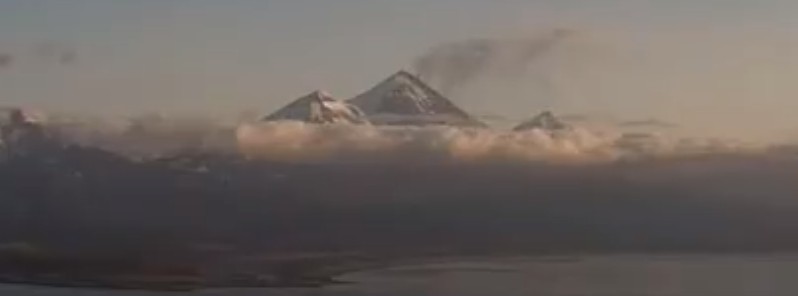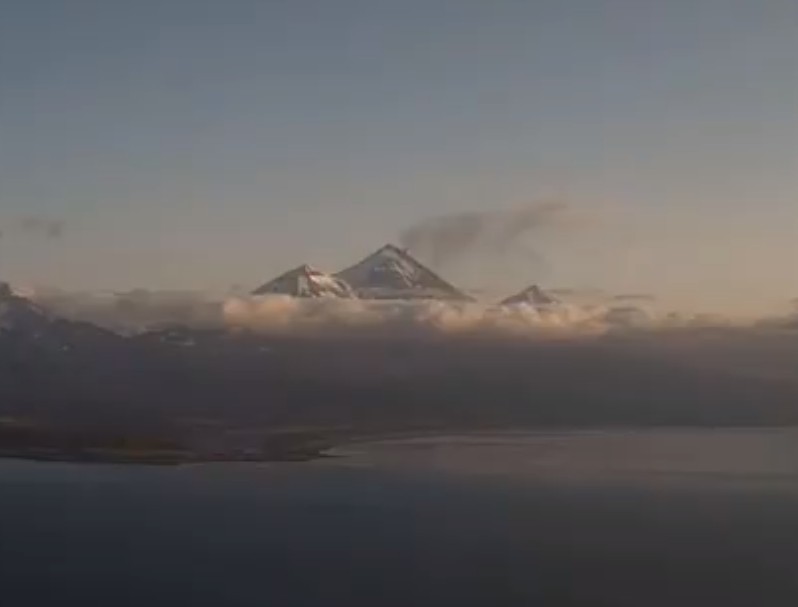Ash-emissions at Pavlof volcano, Aviation Color Code raised to Orange, Alaska

Low-level ash emissions were observed at Pavlof volcano, Alaska on August 5, 2021, prompting the Alaska Volcano Observatory (AVO) to raise the Aviation Color Code to Orange and Alert Level to Watch. In addition, seismic tremor and small explosions have been detected by local seismic and infrasound instruments.
“Intermittent bursts of ash from the summit are producing diffuse ash clouds that are rising just above the summit (summit elevation 2.5 km / 8 261 feet above sea level) and drifting southeast roughly 9.6 km (6 miles) before dissipating,” AVO reported at 17:55 UTC on August 5.
Seismic and infrasound data indicate that activity consists of occasional small explosions and tremor.
The ash emissions indicate an active eruption in progress, AVO said. “Emissions observed yesterday morning were limited in extent and likely produced only local fallout on the southeast flank of the volcano.”
The level of unrest at Pavlof can change quickly and the progression to eruptive activity can occur with little or no warning.
AVO continues to monitor Pavlof closely and will provide any new information about the status of the volcano when or if it becomes available.

Pavlof at 16:32 UTC on August 5, 2021. Credit: USGS/AVO
Geological summary
The most active volcano of the Aleutian arc, Pavlof is a 2 519-m-high (8 264 feet) Holocene stratovolcano that was constructed along a line of vents extending NE from the Emmons Lake caldera.
Pavlof and its twin volcano to the NE, 2 142-m-high (7 027 feet) Pavlof Sister, form a dramatic pair of symmetrical, glacier-covered stratovolcanoes that tower above Pavlof and Volcano bays.
A third cone, Little Pavlof, is a smaller volcano on the SW flank of Pavlof volcano, near the rim of Emmons Lake caldera.
Unlike Pavlof Sister, Pavlof has been frequently active in historical time, typically producing Strombolian to Vulcanian explosive eruptions from the summit vents and occasional lava flows. The active vents lie near the summit on the north and east sides.
The largest historical eruption took place in 1911, at the end of a 5-year-long eruptive episode, when a fissure opened on the N flank, ejecting large blocks and issuing lava flows. (GVP)
Featured image credit: USGS/AVO

Commenting rules and guidelines
We value the thoughts and opinions of our readers and welcome healthy discussions on our website. In order to maintain a respectful and positive community, we ask that all commenters follow these rules:
We reserve the right to remove any comments that violate these rules. By commenting on our website, you agree to abide by these guidelines. Thank you for helping to create a positive and welcoming environment for all.